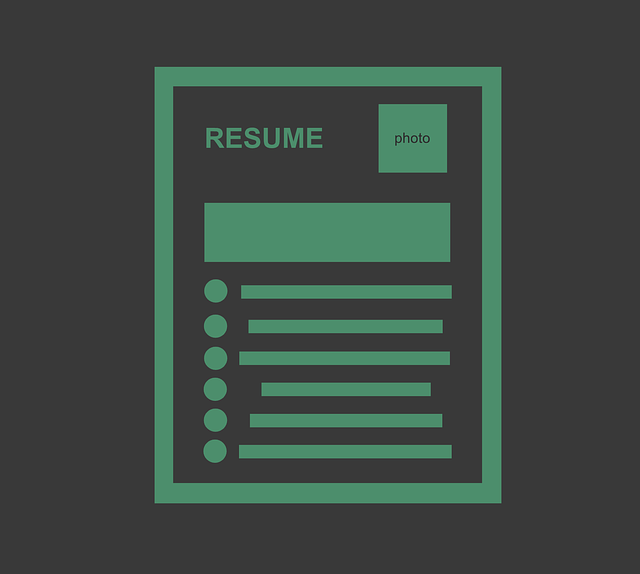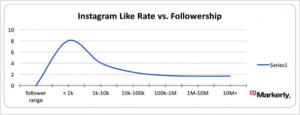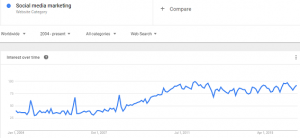— July 7, 2017

typographyimages / Pixabay
Marketers, still treating your resume and LinkedIn profiles more or less the same? If so, you’re probably utilizing one (or both) the wrong way.
Your resume and LinkedIn account are undoubtedly among the best tools available to market your professional skills, experience and talent to marketing recruiting firms and potential employers. Unfortunately, many marketing professionals have the tendency to approach both of them with the same strategy, which means you’re not getting the most value out of either one.
Whether you’re actively job searching for a position in social media staffing or just want to put yourself in the best position to be approached by a marketing executive recruiter for new opportunities, treating your LinkedIn profile and resume alike will only hinder you from moving your career forward.
Make sure you’re approaching both your resume and LinkedIn account with different strategies to maximize your marketing career opportunities:
Understanding the Fundamental Differences
You’d think that experienced marketers would know the difference between a social media platform and a resume, but there is surprising confusion; even among experienced professionals and marketers.
Unlike many other social networks like Twitter or Facebook, it’s common for LinkedIn users to only visit and update their profile at a very specific time: when they’re in need of a new job. That’s where people fumble–LinkedIn is a space to represent yourself to an entire network of potentially millions of people, whereas your resume represents your personal brand to a small pool of selected recipients.
You don’t have to be a social media wizard involved with social media staffing to make personal use of this social network. To take complete advantage of LinkedIn, meet new people, follow up with previous contacts, interact on a casual level with others, share thoughts and interesting content, engage friends, have conversations, participate in groups, or even generate leads and sales. Publish content and develop your reputation as a thought leader. There is an abundance of opportunities at your fingertips (literally!)
On the other hand, your resume should remain efficient and professional with the sole purpose of promoting your qualification for a particular job. It should highlight your professional accomplishments with little of the conversational tone expected on a social network.
Length and Content
With a few exceptions, your marketing resume should usually be limited to one to three pages depending on your seniority. Efficiency, brevity, and proper prioritization are the name of the resume game.
LinkedIn is a good place for you to add the extra creative, personal flare that’s usually cut from your resume. Your work experience section is an opportunity to let your network know about your professional experience in a more descriptive and creative manner. Don’t be afraid to ditch the bullet point list that’s standard for resumes when leveraging LinkedIn.
Whether you have a strong track record as a top marketing leader or a long history performing at the cutting edge of social media marketing, provide potential employers and connections the relevant information about your history in an interesting way. Don’t miss out on a big opportunity just by showing marketing recruiting agencies and potential employers the same thing twice.
Some LinkedIn Profile Guidelines
- You have the ability to use much more space describing your work and accomplishments than a resume. But that doesn’t mean you should write an essay about yourself and every job you’ve had. Be efficient with your space; 2-4 paragraphs for a self-summary and each of your recent jobs is usually sufficient.
- Use your LinkedIn profile as an opportunity to provide supplementary information and content that compliments and builds upon your resume, rather than replicates it.
- For most marketers with developed careers, a detailed explanation of every job you’ve held is unnecessary. In general, you only need to describe the last 10 years or so of your work history on LinkedIn. Beyond that, simply listing your position and place of employment is usually enough.
- Your LinkedIn profile is a great place to put your personality and voice on display in a professional context that’s a little looser than a traditional resume or similar document. But that doesn’t mean it’s an “anything goes” social network like Twitter; be tactful with what you say and how you say it. If you’re unsure whether something is appropriate, it’s always better to err on the side of professionalism.
Customized vs. Universal
When applying to marketing jobs, it’s often wise to adjust your resume from job to job and company to company. Market your experience and qualifications to best fit each position. Some experience and skills will be more relevant for certain positions than others.
On the other hand, your LinkedIn profile needs to be appropriate for a broader audience. It isn’t narrowed for a certain role or organization. Anyone who visits your page will see the same content. Whether it be marketing recruiters, old college friends, potential employers, business prospects, or even complete strangers– the view will only differ based on your privacy settings.
Treat it accordingly! Include only information you’re comfortable with everyone and anyone viewing. A good tip is to also frame yourself in a way that presents you as an interesting, unique human being, and not just another qualified professional among many.
How to Approach Sensitive Information
Marketers are always eager to show their success to potential employers. How did you add value to your previous employer? How did you affect the bottom line?
Providing information on how you affected ROI is always ideal. But it can also get you in trouble if approached the wrong way.
Marketers are increasingly expected to report their success in terms of hard numbers: revenue earned, sales driven, margins grown, leads generated.
But that information is sometimes sensitive; some employers might not appreciate you publicly sharing internal reports and business information. So how do you make up for this on your resume and LinkedIn?
Resume
- Your resume is a personal document and in most cases you have some control who views it. You have more flexibility to share hard numbers–with discretion, of course.
- It’s usually appropriate (and often expected) that you share definitive figures related to your contributions and capabilities. In most cases, you should be able to cite statistics and KPIs relating to your productivity: YoY growth, profits, costs cut, etc.
- With a much broader audience, it’s best not to publish internal business information in terms of dollars and hard figures unless specific granted permission by your employer. Keep this especially in mind if your previous employer was a private enterprise and not a publicly traded firm.
- To adapt your LinkedIn profile to the broader audience, talk in terms of percentage growth and comparison rather than hard numbers. Instead of sharing that you drove $ 1 million in new customer sales in one year, for instance, say that you “doubled” new sales, or increased them by X% over your tenure, or exceeded your goals by Y%.
Keywords
Search engine optimization isn’t just relevant for Google. Like many websites and social networks, LinkedIn contains a search engine of its own. This means marketing recruiters, potential employers, HR departments and professionals can search for a specific person or skillset using LinkedIn. Leverage this to your advantage by including relevant keywords on your profile. Don’t just simply fill your entire page with keywords, but do your research to see what people are searching for to get the most returns.
Implementing keywords in your profile can increase your chances of being noticed by your next employer. You can even get a head start on your next job opportunity through LinkedIn’s recent job preference feature. Now, you can let employers know you’re looking for a new job without alerting your current employer. You can also set your location preference for your next role.
Keyword optimization is important in resumes, too. It helps with standing out in the Applicant Tracking System (ATS) of recruiters and HR departments. You should always be more concerned with your resume serving as a private marketing document optimized for people, not robots. But if you can organically include some powerful keywords there, it can definitely help you show up to the right people at the right time.
Cover Photo
The cover photo is a small distinction between a resume and LinkedIn. By now, a majority of marketers should know it’s not necessary or beneficial to include a headshot in your resume. In fact, it’s one of the things we frequently recommend that they remove.
On the other hand, your LinkedIn should always include a professional high quality photo of you. It can increase viewership of your profile up to 14 times. Your cover photo should be professional, but it’s also a way to show off your creativity and personality.
Business & Finance Articles on Business 2 Community
(35)







